Unit Light
SKU:U021
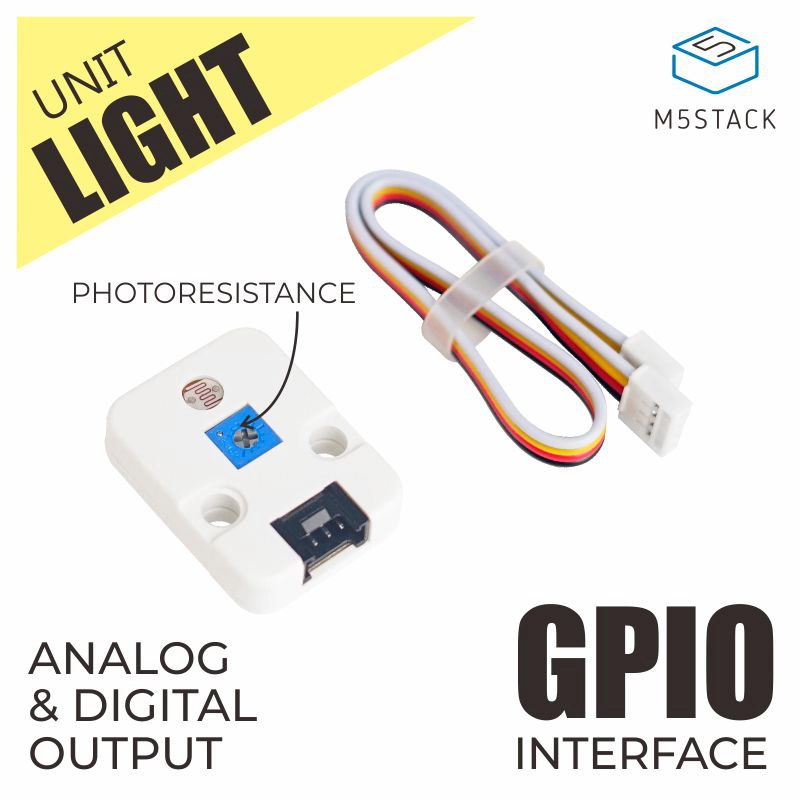
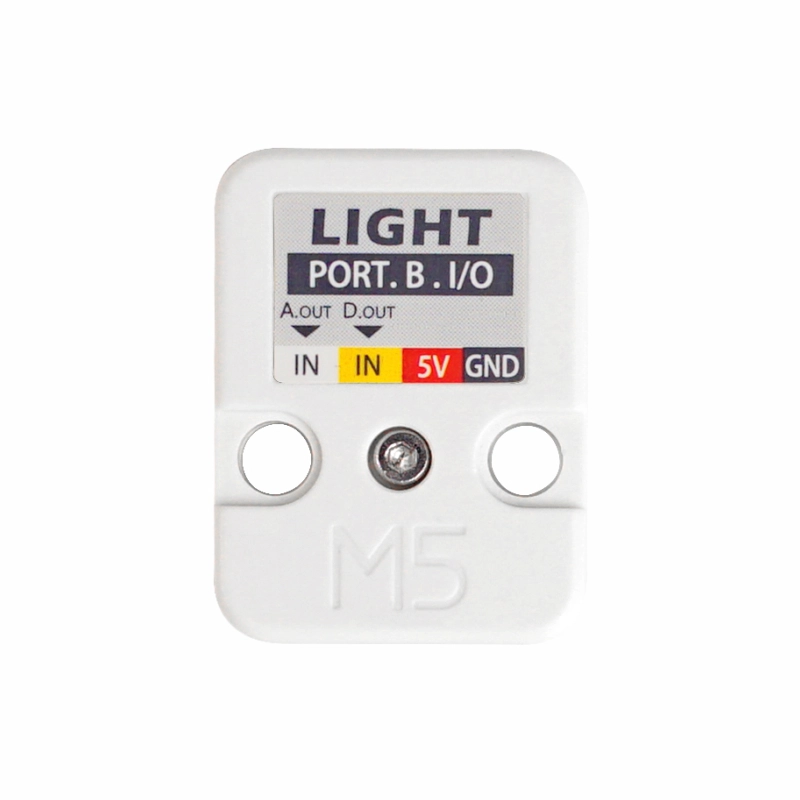
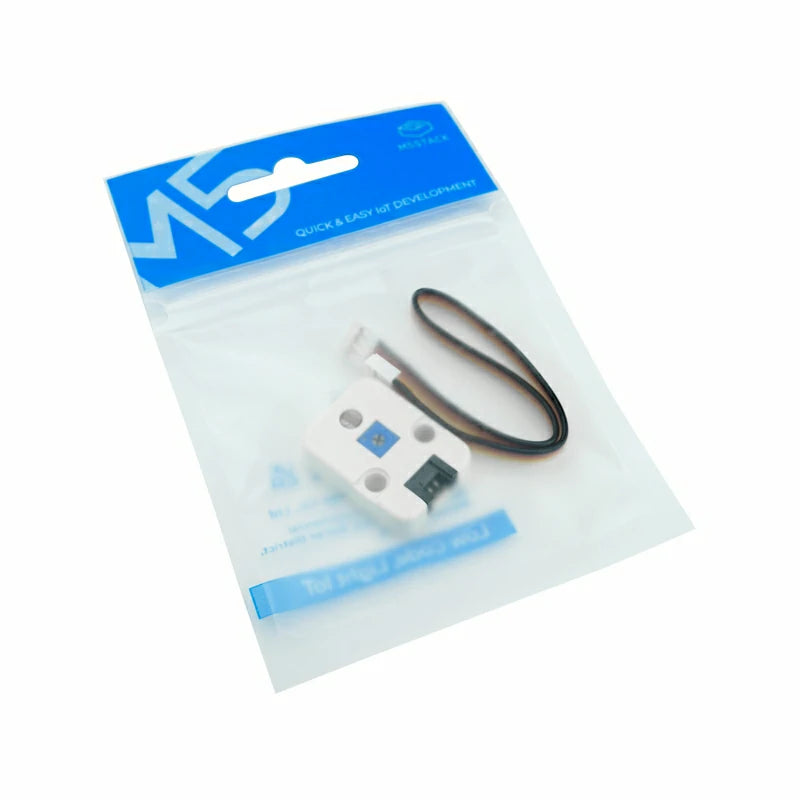
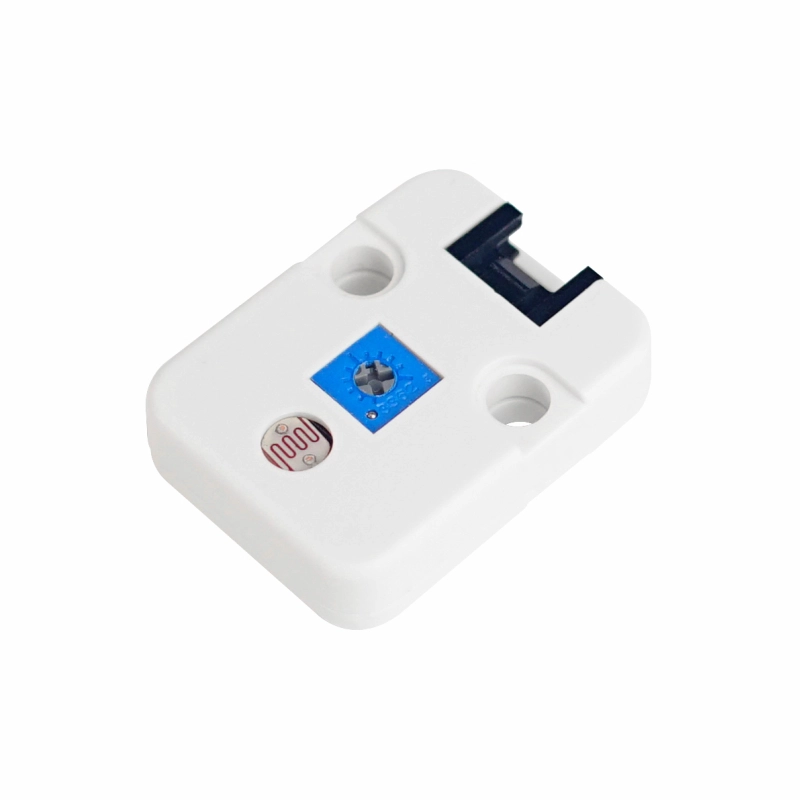
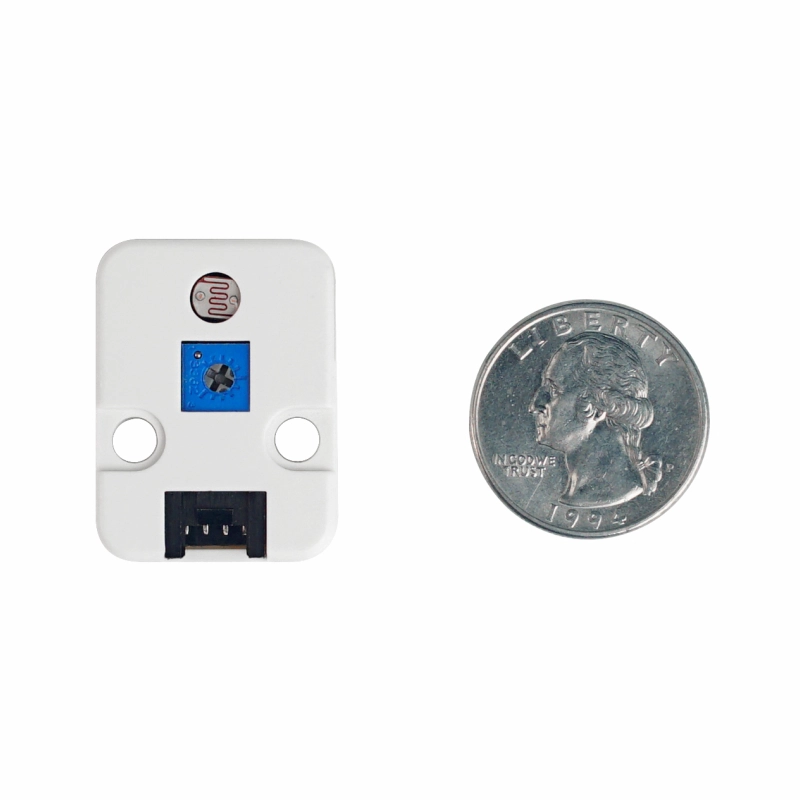





説明
Unit Light は光強度検出センサーです。光センサー抵抗と 10K 可変抵抗を統合し、光照強度を検出し光強度の閾値を設定できます。光センサー抵抗の抵抗値は入射光強度が増加すると低下し、それによる電圧変化を検出して AD 変換を通じて光強度データを取得します。より正確な光強度検出データを得るため、この Unit はLM393デュアル差動コンパレータも使用しており、光センサー抵抗と圧敏抵抗間の差動電圧を比較します。
特徴
- 差動電圧設計
- アナログ・デジタル出力
- 開発プラットフォーム: Arduino、UIFlow
- 2 x LEGO 互換ホール
含まれるもの
- 1 x Unit Light
- 1 x HY2.0-4P Grove 接続ケーブル (20cm)
アプリケーション
- 光制御スイッチ
- ソーラーガーデンライト
- 赤外線監視カメラ
仕様
| 仕様 | パラメータ |
|---|---|
| 可変抵抗 | 10K |
| 製品サイズ | 32.0 x 24.0 x 8.0mm |
| 製品重量 | 4.6g |
| 梱包サイズ | 138.0 x 93.0 x 9.0mm |
| 梱包重量 | 10.0g |
回路図
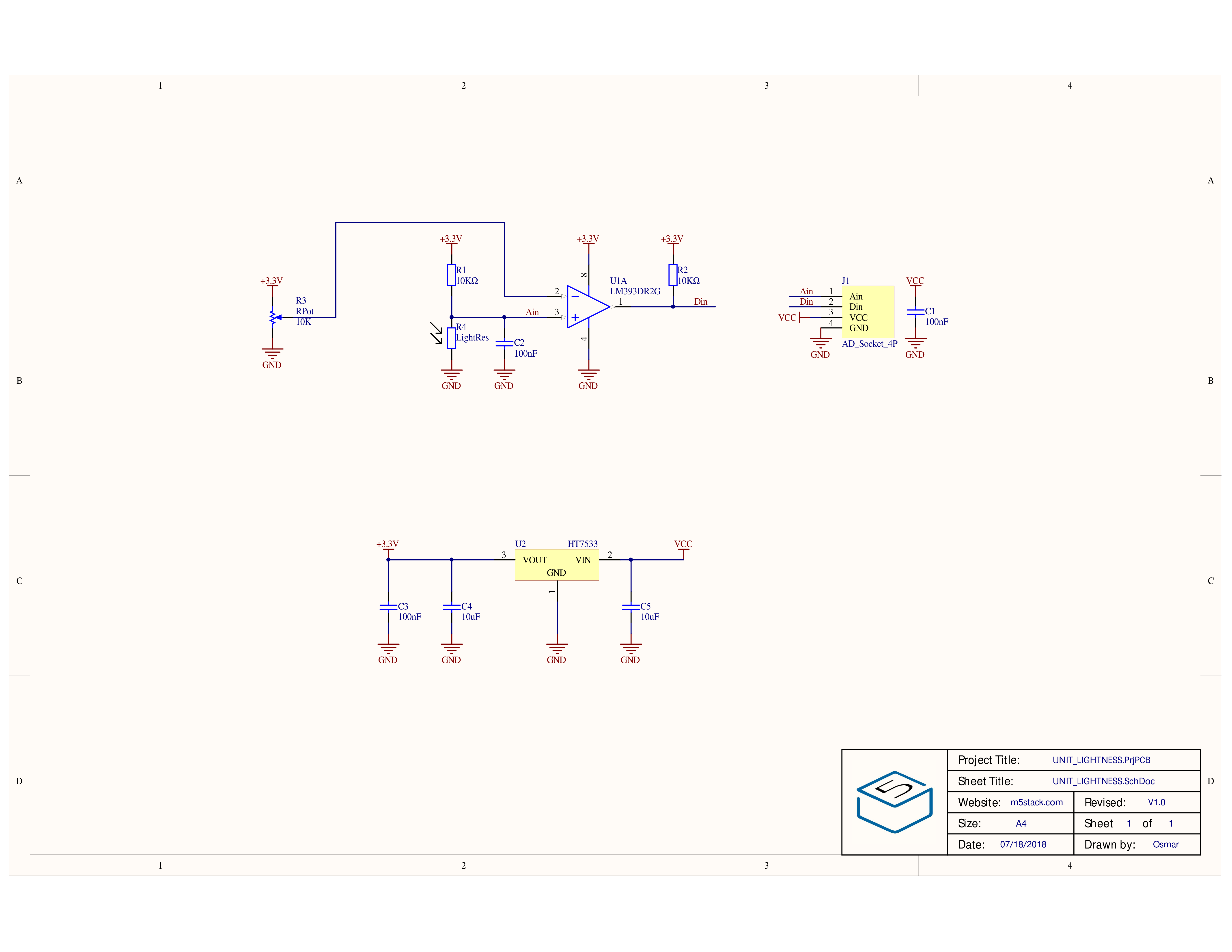
1/1

ピンマップ
Unit Light
| HY2.0-4P | Black | Red | Yellow | White |
|---|---|---|---|---|
| PORT.B | GND | 5V | デジタル出力 | アナログ出力 |
製品サイズ

ソフトウェア
Arduino
UiFlow2
Easyloader
| Easyloader | ダウンロードリンク | 備考 |
|---|---|---|
| Unit Light Test Example Easyloader | download | / |